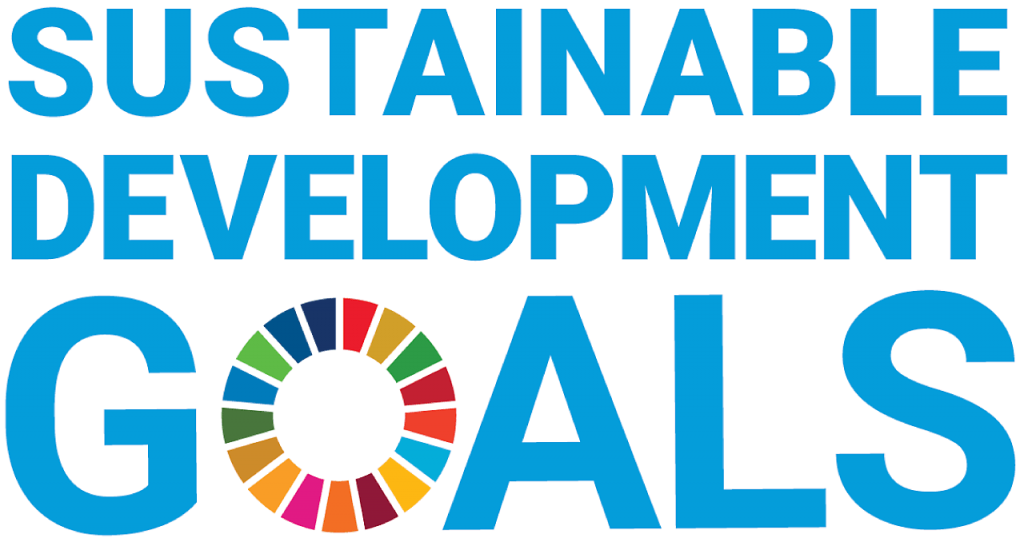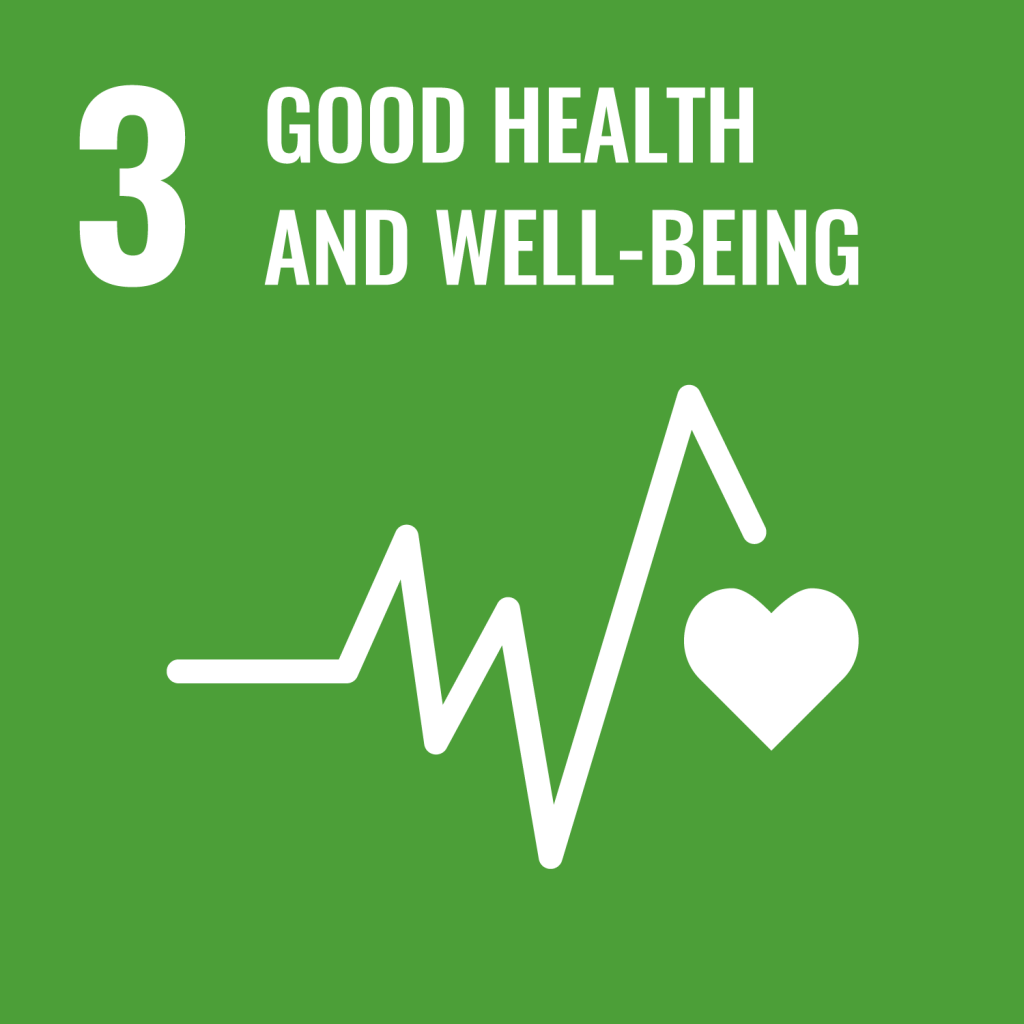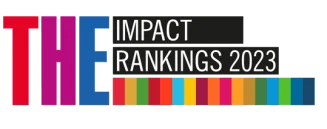
Erratum: Global, regional, and national comparative risk assessment of 84 behavioural, environmental and occupational, and metabolic risks or clusters of risks for 195 countries and territories, 1990–2017: a systematic analysis for the Global Burden of Disease Study 2017 (The Lancet (2018) 392(10159) (1923–1994), (S0140673618322256), (10.1016/S0140-6736(18)32225-6))
By: Stanaway J.D., Afshin A., Gakidou E., Lim S.S., Abate D., Abate K.H., Abbafati C., Abbasi N., Abbastabar H., Abd-Allah F., Abdela J., Abdelalim A., Abdollahpour I., Abdulkader R.S., Abebe M., Abebe Z., Abera S.F., Abil O.Z., Abraha H.N., Abrham A.R., Abu-Raddad L.J., Abu-Rmeileh N.M.E., Accrombessi M.M.K., Acharya D., Acharya P., Adamu A.A., Adane A.A., Adebayo O.M., Adedoyin R.A., Adekanmbi V., Ademi Z., Adetokunboh O.O., Adib M.G., Admasie A., Adsuar J.C., Afanvi K.A., Afarideh M., Agarwal G., Aggarwal A., Aghayan S.A., Agrawal A., Agrawal S., Ahmadi A., Ahmadi M., Ahmadieh H., Ahmed M.B., Aichour A.N., Aichour I., Aichour M.T.E., Akbari M.E., Akinyemiju T., Akseer N., Al-Aly Z., Al-Eyadhy A., Al-Mekhlafi H.M., Alahdab F., Alam K., Alam S., Alam T., Alashi A., Alavian S.M., Alene K.A., Ali K., Ali S.M., Alijanzadeh M., Alizadeh-Navaei R., Aljunid S.M., Alkerwi A., Alla F., Alsharif U., Altirkawi K., Alvis-Guzman N., Amare A.T., Ammar W., Anber N.H., Anderson J.A., Andrei C.L., Androudi S., Animut M.D., Anjomshoa M., Ansha M.G., Antó J.M., Antonio C.A.T., Anwari P., Appiah L.T., Appiah S.C.Y., Arabloo J., Aremu O., Ärnlöv J., Artaman A., Aryal K.K., Asayesh H., Ataro Z., Ausloos M., Avokpaho E.F.G.A., Awasthi A., Ayala Quintanilla B.P., Ayer R., Ayuk T.B., Azzopardi P.S., Babazadeh A., Badali H., Badawi A., Balakrishnan K., Bali A.G., Ball K., Ballew S.H., Banach M., Banoub J.A.M., Barac A., Barker-Collo S.L., Bärnighausen T.W., Barrero L.H., Basu S., Baune B.T., Bazargan-Hejazi S., Bedi N., Beghi E., Behzadifar M., Behzadifar M., Béjot Y., Bekele B.B., Bekru E.T., Belay E., Belay Y.A., Bell M.L., Bello A.K., Bennett D.A., Bensenor I.M., Bergeron G., Berhane A., Bernabe E., Bernstein R.S., Beuran M., Beyranvand T., Bhala N., Bhalla A., Bhattarai S., Bhutta Z.A., Biadgo B., Bijani A., Bikbov B., Bilano V., Bililign N., Bin Sayeed M.S., Bisanzio D., Biswas T., Bjørge T., Blacker B.F., Bleyer A., Borschmann R., Bou-Orm I.R., Boufous S., Bourne R., Brady O.J., Brauer M., Brazinova A., Breitborde N.J.K., Brenner H., Briko A.N., Britton G., Brugha T., Buchbinder R., Burnett R.T., Busse R., Butt Z.A., Cahill L.E., Cahuana-Hurtado L., Campos-Nonato I.R., Cárdenas R., Carreras G., Carrero J.J., Carvalho F., Castañeda-Orjuela C.A., Castillo Rivas J., Castro F., Catalá-López F., Causey K., Cercy K.M., Cerin E., Chaiah Y., Chang H.-Y., Chang J.-C., Chang K.-L., Charlson F.J., Chattopadhyay A., Chattu V.K., Chee M.L., Cheng C.-Y., Chew A., Chiang P.P.-C., Chimed-Ochir O., Chin K.L., Chitheer A., Choi J.-Y.J., Chowdhury R., Christensen H., Christopher D.J., Chung S.-C., Cicuttini F.M., Cirillo M., Cohen A.J., Collado-Mateo D., Cooper C., Cooper O.R., Coresh J., Cornaby L., Cortesi P.A., Cortinovis M., Costa M., Cousin E., Criqui M.H., Cromwell E.A., Cundiff D.K., Daba A.K., Dachew B.A., Dadi A.F., Damasceno A.A.M., Dandona L., Dandona R., Darby S.C., Dargan P.I., Daryani A., Das Gupta R., Das Neves J., Dasa T.T., Dash A.P., Davitoiu D.V., Davletov K., De la Cruz-Góngora V., De La Hoz F.P., De Leo D., De Neve J.-W., Degenhardt L., Deiparine S., Dellavalle R.P., Demoz G.T., Denova-Gutiérrez E., Deribe K., Dervenis N., Deshpande A., Des Jarlais D.C., Dessie G.A., Deveber G.A., Dey S., Dharmaratne S.D., Dhimal M., Dinberu M.T., Ding E.L., Diro H.D., Djalalinia S., Do H.P., Dokova K., Doku D.T., Doyle K.E., Driscoll T.R., Dubey M., Dubljanin E., Duken E.E., Duncan B.B., Duraes A.R., Ebert N., Ebrahimi H., Ebrahimpour S., Edvardsson D., Effiong A., Eggen A.E., El Bcheraoui C., El-Khatib Z., Elyazar I.R., Enayati A., Endries A.Y., Er B., Erskine H.E., Eskandarieh S., Esteghamati A., Estep K., Fakhim H., Faramarzi M., Fareed M., Farid T.A., Sá Farinha C.S.E., Farioli A., Faro A., Farvid M.S., Farzaei M.H., Fatima B., Fay K.A., Fazaeli A.A., Feigin V.L., Feigl A.B., Fereshtehnejad S.-M., Fernandes E., Fernandes J.C., Ferrara G., Ferrari A.J., Ferreira M.L., Filip I., Finger J.D., Fischer F., Foigt N.A., Foreman K.J., Fukumoto T., Fullman N., Fürst T., Furtado J.M., Futran N.D., Gall S., Gallus S., Gamkrelidze A., Ganji M., Garcia-Basteiro A.L., Gardner W.M., Gebre A.K., Gebremedhin A.T., Gebremichael T.G., Gelano T.F., Geleijnse J.M., Geramo Y.C.D., Gething P.W., Gezae K.E., Ghadimi R., Ghadiri K., Ghasemi Falavarjani K.G., Ghasemi-Kasman M., Ghimire M., Ghosh R., Ghoshal A.G., Giampaoli S., Gill P.S., Gill T.K., Gillum R.F., Ginawi I.A., Giussani G., Gnedovskaya E.V., Godwin W.W., Goli S., Gómez-Dantés H., Gona P.N., Gopalani S.V., Goulart A.C., Grada A., Grams M.E., Grosso G., Gugnani H.C., Guo Y., Gupta R., Gupta R., Gupta T., Gutiérrez R.A., Gutiérrez-Torres D.S., Haagsma J.A., Habtewold T.D., Hachinski V., Hafezi-Nejad N., Hagos T.B., Hailegiyorgis T.T., Hailu G.B., Haj-Mirzaian A., Haj-Mirzaian A., Hamadeh R.R., Hamidi S., Handal A.J., Hankey G.J., Hao Y., Harb H.L., Harikrishnan S., Haro J.M., Hassankhani H., Hassen H.Y., Havmoeller R., Hawley C.N., Hay S.I., Hedayatizadeh-Omran A., Heibati B., Heidari B., Heidari M., Hendrie D., Henok A., Heredia-Pi I., Herteliu C., Heydarpour F., Heydarpour S., Hibstu D.T., Higazi T.B., Hilawe E.H., Hoek H.W., Hoffman H.J., Hole M.K., Homaie Rad E., Hoogar P., Hosgood H.D., Hosseini S.M., Hosseinzadeh M., Hostiuc M., Hostiuc S., Hoy D.G., Hsairi M., Hsiao T., Hu G., Hu H., Huang J.J., Hussen M.A., Huynh C.K., Iburg K.M., Ikeda N., Ilesanmi O.S., Iqbal U., Irvani S.S.N., Irvine C.M.S., Islam S.M.S., Islami F., Jackson M.D., Jacobsen K.H., Jahangiry L., Jahanmehr N., Jain S.K., Jakovljevic M., James S.L., Jassal S.K., Jayatilleke A.U., Jeemon P., Jha R.P., Jha V., Ji J.S., Jonas J.B., Jonnagaddala J., Jorjoran Shushtari Z.J., Joshi A., Jozwiak J.J., Jürisson M., Kabir Z., Kahsay A., Kalani R., Kanchan T., Kant S., Kar C., Karami M., Karami Matin B.K., Karch A., Karema C., Karimi N., Karimi S.M., Kasaeian A., Kassa D.H., Kassa G.M., Kassa T.D., Kassebaum N.J., Katikireddi S.V., Kaul A., Kawakami N., Kazemi Z., Kazemi Karyani A., Kefale A.T., Keiyoro P.N., Kemp G.R., Kengne A.P., Keren A., Kesavachandran C.N., Khader Y.S., Khafaei B., Khafaie M.A., Khajavi A., Khalid N., Khalil I.A., Khan G., Khan M.S., Khan M.A., Khang Y.-H., Khater M.M., Khazaei M., Khazaie H., Khoja A.T., Khosravi A., Khosravi M.H., Kiadaliri A.A., Kiirithio D.N., Kim C.-I., Kim D., Kim Y.-E., Kim Y.J., Kimokoti R.W., Kinfu Y., Kisa A., Kissimova-Skarbek K., Kivimäki M., Knibbs L.D., Knudsen A.K.S., Kochhar S., Kokubo Y., Kolola T., Kopec J.A., Kosen S., Koul P.A., Koyanagi A., Kravchenko M.A., Krishan K., Krohn K.J., Kromhout H., Kuate Defo B., Kucuk Bicer B., Kumar G.A., Kumar M., Kuzin I., Kyu H.H., Lachat C., Lad D.P., Lad S.D., Lafranconi A., Lalloo R., Lallukka T., Lami F.H., Lang J.J., Lansingh V.C., Larson S.L., Latifi A., Lazarus J.V., Lee P.H., Leigh J., Leili M., Leshargie C.T., Leung J., Levi M., Lewycka S., Li S., Li Y., Liang J., Liang X., Liao Y., Liben M.L., Lim L.-L., Linn S., Liu S., Lodha R., Logroscino G., Lopez A.D., Lorkowski S., Lotufo P.A., Lozano R., Lucas T.C.D., Lunevicius R., Ma S., Macarayan E.R.K., Machado Í.E., Madotto F., Mai H.T., Majdan M., Majdzadeh R., Majeed A., Malekzadeh R., Malta D.C., Mamun A.A., Manda A.-L., Manguerra H., Mansournia M.A., Mantovani L.G., Maravilla J.C., Marcenes W., Marks A., Martin R.V., Martins S.C.O., Martins-Melo F.R., März W., Marzan M.B., Massenburg B.B., Mathur M.R., Mathur P., Matsushita K., Maulik P.K., Mazidi M., McAlinden C., McGrath J.J., McKee M., Mehrotra R., Mehta K.M., Mehta V., Meier T., Mekonnen F.A., Melaku Y.A., Melese A., Melku M., Memiah P.N., Memish Z.A., Mendoza W., Mengistu D.T., Mensah G.A., Mensink G.B.M., Mereta S.T., Meretoja A., Meretoja T.J., Mestrovic T., Mezgebe H.B., Miazgowski B., Miazgowski T., Millear A.I., Miller T.R., Miller-Petrie M.K., Mini G.K., Mirarefin M., Mirica A., Mirrakhimov E.M., Misganaw A.T., Mitiku H., Moazen B., Mohajer B., Mohammad K.A., Mohammadi M., Mohammadifard N., Mohammadnia-Afrouzi M., Mohammed S., Mohebi F., Mokdad A.H., Molokhia M., Momeniha F., Monasta L., Moodley Y., Moradi G., Moradi-Lakeh M., Moradinazar M., Moraga P., Morawska L., Morgado-Da-Costa J., Morrison S.D., Moschos M.M., Mouodi S., Mousavi S.M., Mozaffarian D., Mruts K.B., Muche A.A., Muchie K.F., Mueller U.O., Muhammed O.S., Mukhopadhyay S., Muller K., Musa K.I., Mustafa G., Nabhan A.F., Naghavi M., Naheed A., Nahvijou A., Naik G., Naik N., Najafi F., Nangia V., Nansseu J.R., Nascimento B.R., Neal B., Neamati N., Negoi I., Negoi R.I., Neupane S., Newton C.R.J., Ngunjiri J.W., Nguyen A.Q., Nguyen G., Nguyen H.T., Nguyen H.L.T., Nguyen H.T., Nguyen M., Nguyen N.B., Nichols E., Nie J., Ningrum D.N.A., Nirayo Y.L., Nishi N., Nixon M.R., Nojomi M., Nomura S., Norheim O.F., Noroozi M., Norrving B., Noubiap J.J., Nouri H.R., Nourollahpour Shiadeh M., Nowroozi M.R., Nsoesie E.O., Nyasulu P.S., Obermeyer C.M., Odell C.M., Ofori-Asenso R., Ogbo F.A., Oh I.-H., Oladimeji O., Olagunju A.T., Olagunju T.O., Olivares P.R., Olsen H.E., Olusanya B.O., Olusanya J.O., Ong K.L., Ong S.K., Oren E., Orpana H.M., Ortiz A., Ota E., Otstavnov S.S., Øverland S., Owolabi M.O., Mahesh P.A., Pacella R., Pakhare A.P., Pakpour A.H., Pana A., Panda-Jonas S., Park E.-K., Parry C.D.H., Parsian H., Patel S., Pati S., Patil S.T., Patle A., Patton G.C., Paudel D., Paulson K.R., Paz Ballesteros W.C., Pearce N., Pereira A., Pereira D.M., Perico N., Pesudovs K., Petzold M., Pham H.Q., Phillips M.R., Pillay J.D., Piradov M.A., Pirsaheb M., Pischon T., Pishgar F., Plana-Ripoll O., Plass D., Polinder S., Polkinghorne K.R., Postma M.J., Poulton R., Pourshams A., Poustchi H., Prabhakaran D., Prakash S., Prasad N., Purcell C.A., Purwar M.B., Qorbani M., Radfar A., Rafay A., Rafiei A., Rahim F., Rahimi Z., Rahimi-Movaghar A., Rahimi-Movaghar V., Rahman M., Rahman M.H.U., Rahman M.A., Rai R.K., Rajati F., Rajsic S., Raju S.B., Ram U., Ranabhat C.L., Ranjan P., Rath G.K., Rawaf D.L., Rawaf S., Reddy K.S., Rehm C.D., Rehm J., Reiner R.C., Reitsma M.B., Remuzzi G., Renzaho A.M.N., Resnikoff S., Reynales-Shigematsu L.M., Rezaei S., Ribeiro A.L.P., Rivera J.A., Roba K.T., Rodríguez-Ramírez S., Roever L., Román Y., Ronfani L., Roshandel G., Rostami A., Roth G.A., Rothenbacher D., Roy A., Rubagotti E., Rushton L., Sabanayagam C., Sachdev P.S., Saddik B., Sadeghi E., Saeedi Moghaddam S., Safari H., Safari Y., Safari-Faramani R., Safdarian M., Safi S., Safiri S., Sagar R., Sahebkar A., Sahraian M.A., Sajadi H.S., Salam N., Salamati P., Saleem Z., Salimi Y., Salimzadeh H., Salomon J.A., Salvi D.D., Salz I., Samy A.M., Sanabria J., Sanchez-Niño M.D., Sánchez-Pimienta T.G., Sanders T., Sang Y., Santomauro D.F., Santos I.S., Santos J.V., Santric Milicevic M.M., Sao Jose B.P., Sardana M., Sarker A.R., Sarmiento-Suárez R., Sarrafzadegan N., Sartorius B., Sarvi S., Sathian B., Satpathy M., Sawant A.R., Sawhney M., Saylan M., Sayyah M., Schaeffner E., Schmidt M.I., Schneider I.J.C., Schöttker B., Schutte A.E., Schwebel D.C., Schwendicke F., Scott J.G., Seedat S., Sekerija M., Sepanlou S.G., Serre M.L., Serván-Mori E., Seyedmousavi S., Shabaninejad H., Shaddick G., Shafieesabet A., Shahbazi M., Shaheen A.A., Shaikh M.A., Shamah Levy T., Shams-Beyranvand M., Shamsi M., Sharafi H., Sharafi K., Sharif M., Sharif-Alhoseini M., Sharifi H., Sharma J., Sharma M., Sharma R., She J., Sheikh A., Shi P., Shibuya K., Shiferaw M.S., Shigematsu M., Shin M.-J., Shiri R., Shirkoohi R., Shiue I., Shokraneh F., Shoman H., Shrime M.G., Shupler M.S., Si S., Siabani S., Sibai A.M., Siddiqi T.J., Sigfusdottir I.D., Sigurvinsdottir R., Silva D.A.S., Silva J.P., Silveira D.G.A., Singh J.A., Singh N.P., Singh V., Sinha D.N., Skiadaresi E., Skirbekk V., Smith D.L., Smith M., Sobaih B.H., Sobhani S., Somayaji R., Soofi M., Sorensen R.J.D., Soriano J.B., Soyiri I.N., Spinelli A., Sposato L.A., Sreeramareddy C.T., Srinivasan V., Starodubov V.I., Steckling N., Stein D.J., Stein M.B., Stevanovic G., Stockfelt L., Stokes M.A., Sturua L., Subart M.L., Sudaryanto A., Sufiyan M.B., Sulo G., Sunguya B.F., Sur P.J., Sykes B.L., Szoeke C.E.I., Tabarés-Seisdedos R., Tabuchi T., Tadakamadla S.K., Takahashi K., Tandon N., Tassew S.G., Tavakkoli M., Taveira N., Tehrani-Banihashemi A., Tekalign T.G., Tekelemedhin S.W., Tekle M.G., Temesgen H., Temsah M.-H., Temsah O., Terkawi A.S., Tessema B., Teweldemedhin M., Thankappan K.R., Theis A., Thirunavukkarasu S., Thomas H.J., Thomas M.L., Thomas N., Thurston G.D., Tilahun B., Tillmann T., To Q.G., Tobollik M., Tonelli M., Topor-Madry R., Torre A.E., Tortajada-Girbés M., Touvier M., Tovani-Palone M.R., Towbin J.A., Tran B.X., Tran K.B., Truelsen T.C., Truong N.T., Tsadik A.G., Tudor Car L., Tuzcu E.M., Tymeson H.D., Tyrovolas S., Ukwaja K.N., Ullah I., Updike R.L., Usman M.S., Uthman O.A., Vaduganathan M., Vaezi A., Valdez P.R., Van Donkelaar A., Varavikova E., Varughese S., Vasankari T.J., Venkateswaran V., Venketasubramanian N., Villafaina S., Violante F.S., Vladimirov S.K., Vlassov V., Vollset S.E., Vos T., Vosoughi K., Vu G.T., Vujcic I.S., Wagnew F.S., Waheed Y., Waller S.G., Walson J.L., Wang Y., Wang Y., Wang Y.-P., Weiderpass E., Weintraub R.H., Weldegebreal F., Werdecker A., Werkneh A.A., West J.J., Westerman R., Whiteford H.A., Widecka J., Wijeratne T., Winkler A.S., Wiyeh A.B., Wiysonge C.S., Wolfe C.D.A., Wong T.Y., Wu S., Xavier D., Xu G., Yadgir S., Yadollahpour A., Yahyazadeh Jabbari S.H., Yamada T., Yan L.L., Yano Y., Yaseri M., Yasin Y.J., Yeshaneh A., Yimer E.M., Yip P., Yisma E., Yonemoto N., Yoon S.-J., Yotebieng M., Younis M.Z., Yousefifard M., Yu C., Zaidi Z., Zaman S.B., Zamani M., Zavala-Arciniega L., Zhang A.L., Zhang H., Zhang K., Zhou M., Zimsen S.R.M., Zodpey S., Murray C.J.L., GBD 2017 Risk Factor Collaborators
Published in: The Lancet
SDGs : SDG 03 | Units: | Time: 2019 | Link
Description: Background The Global Burden of Diseases, Injuries, and Risk Factors Study (GBD) 2017 comparative risk assessment (CRA) (more…)








